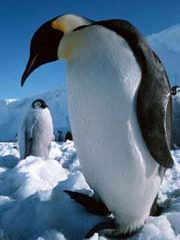
Insulin resistance, a condition commonly associated with the development of type 2 diabetes, is likely a major cause of kidney disease, or nephropathy, in people with type 1 diabetes, according to study results published by University of Pittsburgh Graduate School of Public Health (GSPH) researchers in the September issue of Kidney International, a journal of the International Society of Nephrology. “Kidney disease is a major lethal complication for people with diabetes, particularly those with type

Will we pay using our fingerprint, or enter a building just touching a sensor? Does our mobile phone recognize our fingerprint? It is possible, as far as Dutch PhD student Asker Bazen is concerned. He has improved the verification techniques, resulting in a better result even for deformed and damaged prints. Together with a higher speed, the new methods can take away existing reserves for implementing fingerprint verification. Bazen is finishing his PhD research at the faculty of Electrical Engineeri

Danish authors of a research letter in this week’s issue of THE LANCET provide further evidence which suggests that allergic diseases are becoming increasingly common in western populations.
Allergic diseases are thought to be increasingly common in more-developed countries, but few studies have measured the frequency of atopy with objective measures, and most of these studies have been done in industrialised countries. Tyra Krause and colleagues from Statens Serum Institut, Copenhagen, De

Recent changes in Antarctic seabird populations may be linked to environmental change according to scientists reporting in the journal Science this week. Researchers from the Cambridge-based British Antarctic Survey (BAS) reviewed the best available data from a range of long-term studies to test the view that warming of the Earth`s climate is affecting Antarctic marine life. Whilst they found that sea-ice has a profound influence on population levels of snow petrels, Adélie and emperor penguins, the

Eyeglasses with built-in computer monitors could soon be a reasonable alternative to reading text from a traditional computer screen, according to new research from Ohio State University.
Participants in a recent study rated the comfort and performance of these so-called near-eye displays as comparable to that of traditional computer monitors. Near-eye displays are like eyeglasses with a monitor built into the lenses.
“The problems with near-eye devices range from motion sickness t

MIT researchers have shown that a common pollutant strongly impacts the behavior of arsenic and possibly other toxic metals in some lakes, adding to scientists’ understanding of how such elements move through the water.
“The work shows that nitrate pollution, which arises from sources such as automobile exhaust, wastewater disposal and fertilizers, is more important in lake dynamics than had been thought,” said Harry Hemond, the Leonhard Professor of Civil and Environmental Engineering

Quantum defects have the potential to act as ultra-sensitive sensors that could offer new kinds of navigation or biological sensor technology. One type of these defect systems, nitrogen vacancy (NV)…

Breakthrough non-invasive technology for imaging through scattering media. Researchers introduce image-guided computational holographic wavefront shaping, offering fast and versatile solutions for complex imaging challenges. New study introduces a novel computational…

Modern astronomy has clung to the belief that the relativistic outflows or jets responsible for the existence of electromagnetic radiation of particularly high energies are located in the nuclei of…

In a pilot study, researchers at the University of Zurich have used artificial intelligence to detect antibiotic resistance in bacteria for the first time. This is an important first step…

New Method for Measuring Luminescence Lifetime. Researchers at the Max Planck Institute for Marine Microbiology, Leibniz-Institute for Baltic Sea Research and University of Copenhagen introduce an innovative approach to image…

UFZ study demonstrates for the first time the toxicological relevance of chemical mixtures as they occur in humans. “In our everyday lives, we are exposed to a wide variety of…

… and thermal post-treatment of flexible ultra-thin glass. Ultra-thin glass offers great potential for modern high-tech applications. Despite its superior properties compared to polymer films, the material has not yet…

Conventional catalysts for hydrogen production via water electrolysis usually contain precious metals and are expensive. However, cheaper alternatives have been developed, for example cobalt-manganese catalysts. They have a high activity…

The European Commission’s targets are ambitious: the ReFuelEU Aviation Regulation stipulates a 60 percent reduction in CO₂ emissions from aviation by 2050 compared to 1990 levels. A comprehensive EU Space…

New photonic computing method uses electromagnetic waves to solve partial differential equations rapidly. In the fields of physics, mathematics, and engineering, partial differential equations (PDEs) are essential for modeling various…

Neuroscientists show how fine motor skills of neural prostheses can be improved. Researchers at the German Primate Center – Leibniz Institute for Primate Research in Göttingen have developed a novel…

The TUM and the Pfennigparade Foundation have started a three-year research collaboration. The research will focus on the potential of robotics and AI-based technologies to help people with motor disabilities…